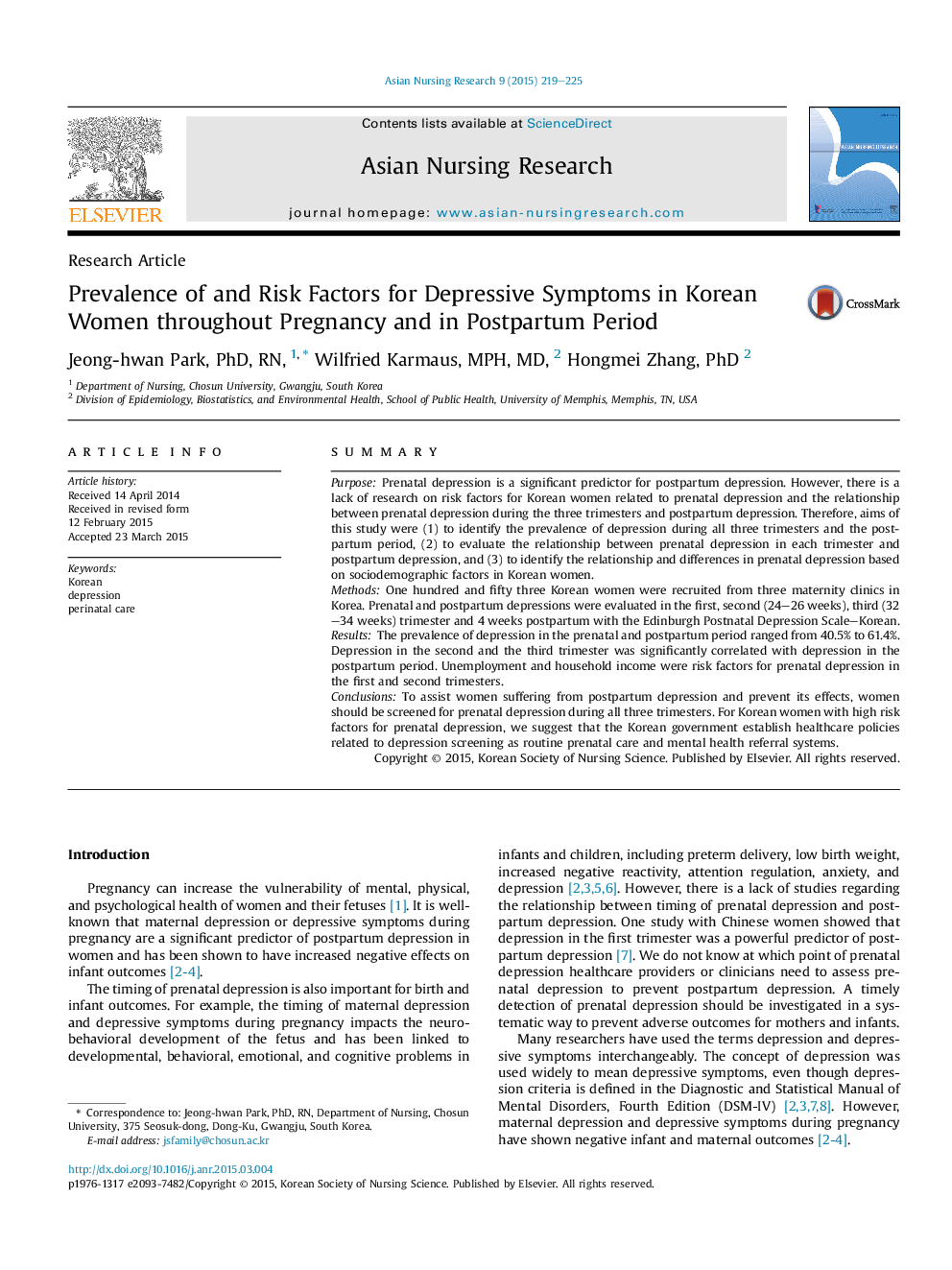| Article ID | Journal | Published Year | Pages | File Type |
|---|---|---|---|---|
| 2645175 | Asian Nursing Research | 2015 | 7 Pages |
SummaryPurposePrenatal depression is a significant predictor for postpartum depression. However, there is a lack of research on risk factors for Korean women related to prenatal depression and the relationship between prenatal depression during the three trimesters and postpartum depression. Therefore, aims of this study were (1) to identify the prevalence of depression during all three trimesters and the postpartum period, (2) to evaluate the relationship between prenatal depression in each trimester and postpartum depression, and (3) to identify the relationship and differences in prenatal depression based on sociodemographic factors in Korean women.MethodsOne hundred and fifty three Korean women were recruited from three maternity clinics in Korea. Prenatal and postpartum depressions were evaluated in the first, second (24–26 weeks), third (32–34 weeks) trimester and 4 weeks postpartum with the Edinburgh Postnatal Depression Scale–Korean.ResultsThe prevalence of depression in the prenatal and postpartum period ranged from 40.5% to 61.4%. Depression in the second and the third trimester was significantly correlated with depression in the postpartum period. Unemployment and household income were risk factors for prenatal depression in the first and second trimesters.ConclusionsTo assist women suffering from postpartum depression and prevent its effects, women should be screened for prenatal depression during all three trimesters. For Korean women with high risk factors for prenatal depression, we suggest that the Korean government establish healthcare policies related to depression screening as routine prenatal care and mental health referral systems.
